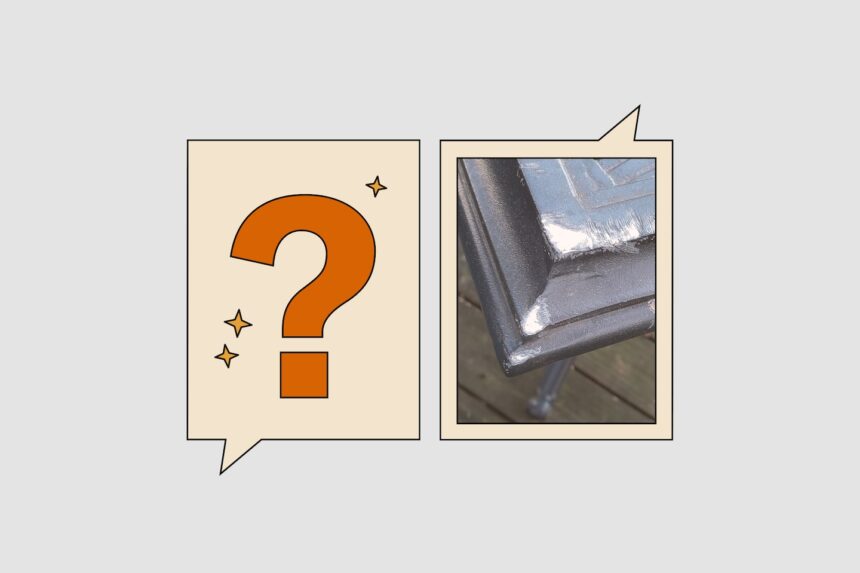There is no fail-safe way to prevent squirrels from chewing on materials they find attractive, but you can probably limit the damage.
As you note, squirrels are rodents, and, as such, they need to gnaw on stiff materials to wear down their upper and lower incisors, which grow throughout their lifetimes. In the woods, that allows squirrels to open nuts and rip apart stumps. In a yard, these animals chew wood, plastic, upholstery, asphalt roofing and much more — even soft metals. Squirrel teeth are no match for steel. But squirrels can bite into aluminum lawn furniture, aluminum flashing and copper wiring.
When squirrels chew their way into attics or other parts of houses, plugging the entry holes can go a long way toward preventing additional damage. You’re trying to protect furniture that’s out in the open, at least in good weather. But in both cases, one good place to start is to make your yard as inhospitable as possible to squirrels.
Feed dogs or cats indoors. Take down bird feeders, or at least switch to ones that are designed to keep out squirrels. Rake up acorns or other nuts frequently when they fall, usually from late summer into early winter. You can also try to keep squirrels from climbing into the trees to harvest nuts that haven’t yet fallen. The Maryland Department of Natural Resources suggests trimming away branches within 6 feet of the ground and then wrapping an 18-inch-long sheet metal cylinder around the trunk with the top of the cylinder about 4½ feet above the ground.
Squirrels usually avoid materials with tastes or scents they find disagreeable. Besides cayenne, peppermint is high on the list. Some people also report success with black pepper, vinegar, garlic and Irish Spring soap. But those scents need to be fresh to have any hope of working. The red pepper flakes you sprinkled around your furniture in the fall before you spread the tarp could easily have become stale during the winter. Or maybe there was enough ventilation under the tarp to blow the pepper away from the parts squirrels chewed.
During months when you are on the deck regularly, though, scents might be more effective as long as you reapply them frequently, especially after rain. Watch what happens. If a homemade concoction or a purchased product works for a while and then squirrels come back, perhaps they’ve figured out that the smell isn’t in the metal. Try switching to a different recipe. Peppermint oil alone or peppermint mixed with garlic or hot sauce might last longer than something mixed only with water.
It’s also possible that painting the furniture with a finish mixed with cayenne might work, because squirrels would refresh the smell as they gnaw. Rymar Industries, a manufacturer of stains and other finishes for decks, wood siding, log homes and fences, used to sell 2-ounce packages of Rymar Chew Stop, which it advertised as “a natural pepper additive that may help prevent animals from chewing on wood.”
A company representative said the Environmental Protection Agency no longer allows that product to be sold on its own, but Rymar incorporates it in other products.
There is also a long tradition of mixing cayenne into paint for the bottoms of boats, supposedly to help keep barnacles from growing there. You might want to experiment on some scrap pieces of aluminum — maybe a pot or two from a Goodwill store. A packet of Chew Stop was enough to treat 2 gallons of paint, which gives some idea of proportions if you make your own red-hot paint.
And understanding the reason squirrels chew might lead you to some other clever solutions. Can you make chair and table legs less attractive for chewing by wrapping them with soft material? Cushions might make edges of seats less vulnerable. And over the winter, tightly fitting furniture covers might work better than tarps. An even better solution for the winter would be to bring the furniture into a garage or garden structure — one you monitor occasionally to make sure squirrels haven’t chewed into them.
Trapping squirrels is another solution, but as with scents, it’s usually only a short-term fix. Where there is good squirrel habitat — for example, a yard like yours, with oak trees — new squirrels will move in, even if you remove the animals that are there now.
State and local regulations for trapping vary. In Maryland, homeowners need a permit (it’s free) from the state Department of Natural Resources to trap and shoot squirrels outside of hunting season, and permits are granted only when an animal is actively causing property damage or is a threat to public health and safety. Call the department’s nuisance wildlife hotline at 877-463-6497 for advice and a possible referral to a private licensed Wildlife Control trapper or exterminator.
If you do decide to trap, there’s the issue of what to do with any squirrels you catch. Hiring a pro solves that problem. WildlifeHelp.org, which in Maryland is supported partly by the Department of Natural Resources, notes that many states don’t permit people to move trapped squirrels to a different property because of concerns about spreading disease or releasing animals where they won’t survive. If you trap a squirrel that’s gotten into your attic, rapidly plugging the entry, moving a nest with babies outside (so the mother can move the babies), and then releasing the trapped squirrel might make sense. But in most cases, if you trap, it makes no sense to then release the squirrel on your lot.
Have a problem in your home? Send questions to localliving@washpost.com. Put “How To” in the subject line, tell us where you live and try to include a photo.

